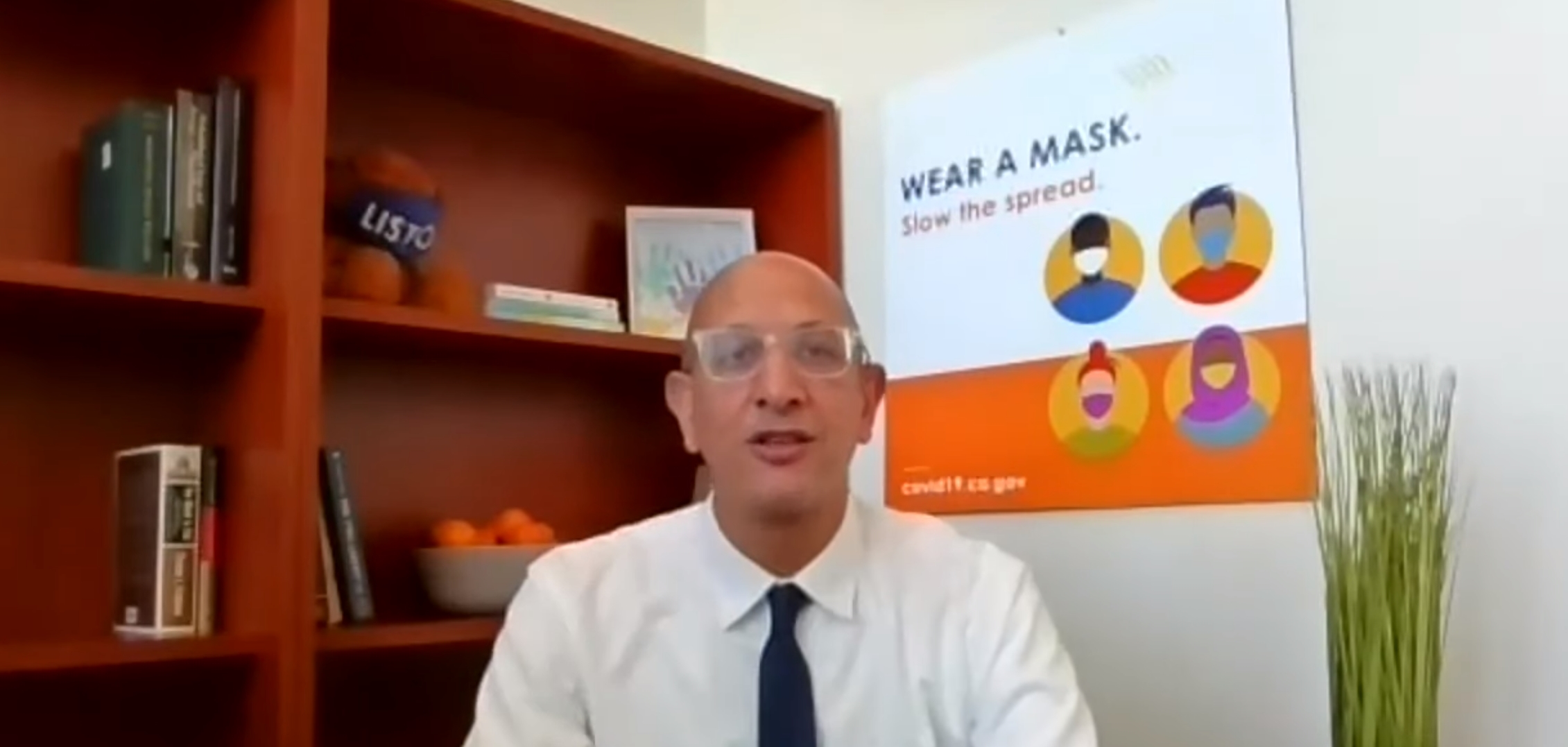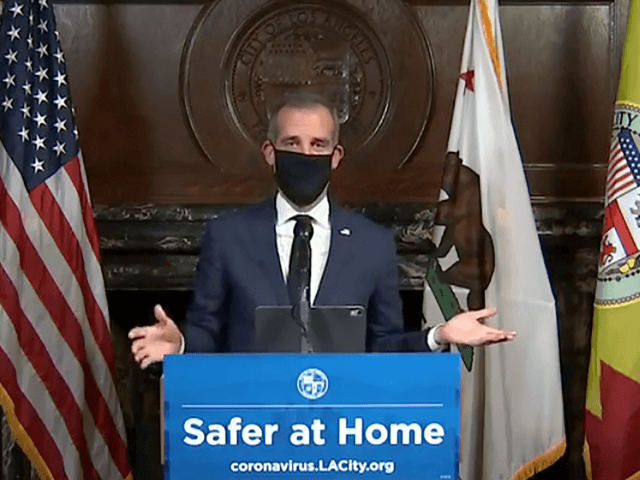
Sen. Jerry Hill. (Photo: Kevin Sanders for California Globe)
Workers’ Compensation in the Time of COVID-19
Employees sick with coronavirus can file workers’ compensation claims agains their employers
By Chris Micheli, September 20, 2020 8:02 am
On September 17, Governor Gavin Newsom signed Senate Bill 1159 , by Senator Jerry Hill (D-San Mateo), into law as Chapter 85. Under the new law, employers face stricter requirements to report workplace Covid-19 cases to health authorities, and employees sick with coronavirus can file workers’ compensation claims agains their employers.
Section 1 of the bill added Labor Code Section 77.8. It requires the Commission on Health and Safety and Workers’ Compensation to conduct a study of the impacts that claims of COVID-19 have had on the workers’ compensation system. This study is to include overall impacts on indemnity benefits, medical benefits, and death benefits, including differences in the impacts across differing occupational groups. A final report is due no later than April 30, 2022.
Section 2 of the bill added Labor Code Section 3212.86. This section applies to any employee with a COVID-19-related illness. “Injury” includes illness or death resulting from COVID-19 if both the employee has tested positive for or was diagnosed with COVID-19 within 14 days after a day that the employee performed labor or services at the employee’s place of employment at the employer’s direction, and the day on which the employee performed labor or services at the employee’s place of employment at the employer’s direction was on or after March 19, 2020, and on or before July 5, 2020.
In addition, the diagnosis was done by a licensed physician and surgeon holding an M.D. or D.O. degree or state licensed physician assistant or nurse practitioner and that diagnosis is confirmed by testing or by a COVID-19 serologic test within 30 days of the date of the diagnosis. The compensation that is awarded for injury pursuant to this section includes full hospital, surgical, medical treatment, disability indemnity, and death benefits.
If an employee has paid sick leave benefits specifically available in response to COVID-19, those benefits must be used and exhausted before any temporary disability benefits are due and payable. If an employee does not have those sick leave benefits, the employee must be provided temporary disability benefits from the date of disability. And, there is not a waiting period for temporary disability benefits.
In order to qualify for temporary disability benefits under this section, an employee must satisfy either that the employee has tested positive or is diagnosed with COVID-19 on or after May 6, 2020, (in which case, the employee must be certified for temporary disability within the first 15 days after the initial diagnosis) or, if the employee has tested positive or was diagnosed with COVID-19 before May 6, 2020, the employee must have obtained a certification no later than May 21, 2020 documenting the period for which the employee was temporarily disabled and unable to work.
Furthermore, an employee must be certified for temporary disability by a physician holding a physician’s and surgeon’s license. If the employee has a predesignated physician, is covered by a medical provider network, is covered by a workers’ compensation health care organization, or is covered by a group health plan, then the certifying physician must be a physician and surgeon in that network, organization, or plan.
An injury is presumed to arise out of and in the course of the employment, but this presumption is disputable and may be controverted by other evidence. Unless controverted, the Workers’ Compensation Appeals Board is bound to find with the presumption.
Moreover, if liability for a claim of a COVID-19-related illness is not rejected within 30 days after the date the claim form is filed, then the illness must be presumed compensable. The presumption is rebuttable only by evidence discovered subsequent to the 30-day period.
In addition, the Department of Industrial Relations must waive the right to collect any death benefit payment due that arises out of claims covered by this section. This new section applies to all pending matters, such as pending claims relying on Executive Order N-62-20.
Finally, the terms “COVID-19” and “place of employment” are defined. And, this new section remains in effect only until January 1, 2023.
Section 3 of the bill added Labor Code Section 3212.87. This new section applies to active firefighting members, whether volunteers, partly paid, or fully paid, of specified fire departments; peace officers; fire and rescue services coordinators who work for the Office of Emergency Services; an employee who provides direct patient care, or a custodial employee in contact with COVID-19 patients, who works at a health facility; an authorized registered nurse, emergency medical technician or paramedic; an employee who provides direct patient care for a home health agency; employees of health facilities; and, a provider of in-home supportive services when they provide the in-home supportive services outside their own home or residence.
The term “injury” is defined to include illness or death resulting from COVID-19 if specified circumstances are met including that the employee has tested positive for COVID-19 within 14 days after a day that the employee performed labor or services at the employee’s place of employment at the employer’s direction; the day on which the employee performed labor or services at the employee’s place of employment at the employer’s direction, was on or after July 6, 2020.
Under this new code section, the compensation that is awarded for injury includes full hospital, surgical, medical treatment, disability indemnity, and death benefits. If an employee has paid sick leave benefits specifically available in response to COVID-19, then those benefits must be used and exhausted before any temporary disability benefits. However, if an employee does not have those sick leave benefits, then the employee must be provided temporary disability benefits from the date of disability. And, there cannot be a waiting period for temporary disability benefits.
In addition, an injury under this code section is presumed to arise out of and in the course of the employment, except as specified. This presumption is disputable and may be controverted by other evidence. However, unless controverted, the WCAB is bound to find with the presumption. Moreover, this presumption is extended following termination of service for a period of 14 days.
If liability for a claim of a COVID-19-related illness is not rejected within 30 days after the date the claim form is filed, then the illness is presumed compensable. The presumption is rebuttable only by evidence discovered subsequent to the 30-day period.
The Department of Industrial Relations must waive the right to collect any death benefit payment due that arises out of claims covered by this section. Also, this section applies to all pending matters. The section defines the terms “COVID-19” “test” or “testing,” and “employee’s place of employment”. This section remains in effect only until January 1, 2023.
Section 4 of the bill added Labor Code Section 3212.88. This section applies to employees who are not described in Section 3212.87 and who test positive during an outbreak at the employee’s specific place of employment, and whose employer has five or more employees. The term “injury” is defined.
This new section applies if the employee tests positive for COVID-19 within 14 days after a day that the employee performed labor or services at the employee’s place of employment at the employer’s direction; and the day on which the employee performed labor or services at the employee’s place of employment at the employer’s direction was on or after July 6, 2020; and the date of injury is the last date the employee performed labor or services at the employee’s place of employment at the employer’s direction prior to the positive test; and, the employee’s positive test occurred during a period of an outbreak at the employee’s specific place of employment.
The compensation that is awarded for injury includes full hospital, surgical, medical treatment, disability indemnity, and death benefits. If an employee has paid sick leave benefits specifically available in response to COVID-19, those benefits must be used and exhausted before any temporary disability benefits are due and payable. If an employee does not have those sick leave benefits, the employee must be provided temporary disability benefits from the date of disability. There is not be a waiting period for temporary disability benefits.
An injury under this section is presumed to arise out of and in the course of the employment. This presumption is disputable and may be controverted by other evidence. However, unless controverted, the WCAB is bound to find with the presumption. This presumption is extended to a person following termination of service for a period of 14 days, commencing with the last date actually worked in the specified capacity at the employee’s place of employment. Moreover, this section does not affect an employee’s rights to compensation for an injury or illness in accordance with a preponderance of evidence.
Evidence relevant to controverting the presumption may include, but is not limited to, evidence of measures in place to reduce potential transmission of COVID-19 in the employee’s place of employment and evidence of an employee’s nonoccupational risks of COVID-19 infection. If liability for a claim of a COVID-19-related illness is not rejected within 45 days after the date the claim form is filed, the illness is presumed compensable. The presumption is rebuttable only by evidence discovered subsequent to the 45-day period.
The Department of Industrial Relations must waive the right to collect any death benefit payment arising out of claims covered by this section. This section applies to all pending matters, but is not a basis to rescind, alter, amend, or reopen any final award of workers’ compensation benefits.
When the employer knows or reasonably should know that an employee has tested positive for COVID-19, the employer must report to their claims administrator in writing via electronic mail or facsimile within three business days specified information:
- An employee has tested positive.
- The date that the employee tests positive.
- The specific address or addresses of the employee’s specific place of employment during the 14-day period preceding the date of the employee’s positive test.
- The highest number of employees who reported to work at the employee’s specific place of employment in the 45-day period preceding the last day the employee worked at each specific place of employment.
An employer or other person acting on behalf of an employer who intentionally submits false or misleading information or fails to submit information when reporting is subject to a civil penalty up to $10,000 to be assessed by the Labor Commissioner. If the Labor Commissioner determines that an employer or other person has intentionally submitted false or misleading information, the Labor Commissioner may issue a citation to the person in violation.
If a person desires to contest a citation or the proposed assessment of a civil penalty, they must, within 15 business days after service of the citation, notify the office of the Labor Commissioner which appears on the citation of their request for an informal hearing. The Labor Commissioner or their deputy will, within 30 days, hold a hearing at the conclusion of which the citation or proposed assessment of a civil penalty shall be affirmed, modified, or dismissed.
The claims administrator must use information reported to determine if an outbreak has occurred for the purpose of administering a claim. To calculate the number of employees at a specific place of employment, the claims administrator must utilize the data reported for the first employee who is part of the outbreak.
Any employer who is aware of an employee testing positive on or after July 6, 2020, and prior to the effective date of this section, must report to their claims administrator, in writing via electronic mail or facsimile, within 30 business days of the effective date of this section, all of the data required. The claims administrator must use the information reported to determine if an outbreak has occurred from July 6, 2020, to the effective date of this section, for the purpose of applying the presumption.
Moreover, a claim is not part of an outbreak if it occurs during a continuous 14-day period where the requisite number of positive tests have not been met. In addition, this section defines the terms “COVID-19,” “test” or “testing,” “a specific place of employment,” and “outbreak”. This section remains in effect only until January 1, 2023.
Section 5 of the bill contains an urgency clause and, as a result, the bill took effect on September 17. The basis for the urgency clause was, “In light of the Governor’s declaration on March 4, 2020, of a state of emergency due to the spread of COVID-19, and because of the heightened risk of COVID-19 infection to frontline workers and workers whose workplaces have suffered a COVID-19 outbreak, it is necessary that this act take effect immediately.”
- Visitation Rights for Minor Children - January 7, 2026
- Health Insurance Assignment - January 7, 2026
- Court-ordered Child Support - January 6, 2026




